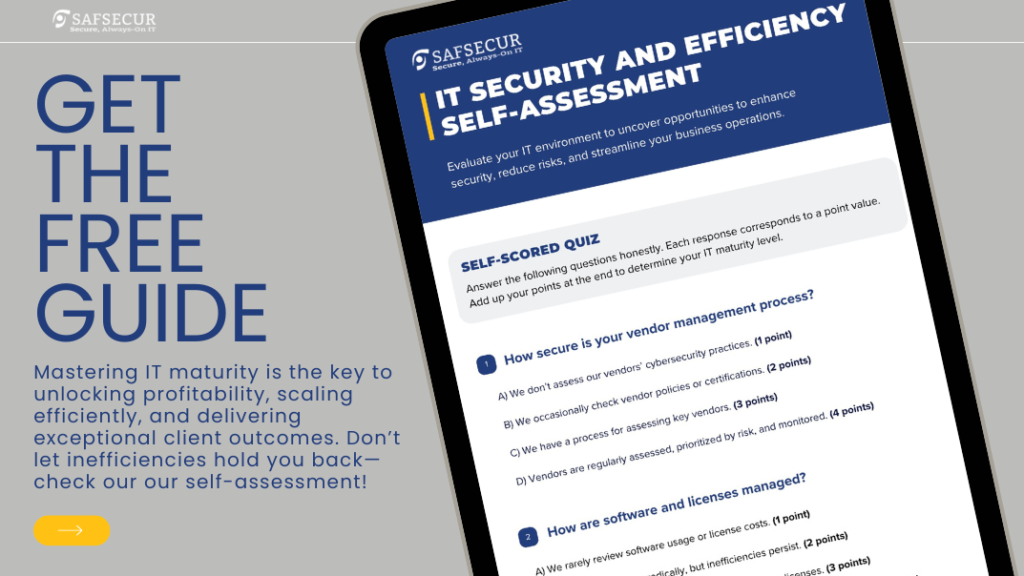How to Build a Resilient IT Infrastructure That Scales with Your Business
For most businesses, IT used to be something you “set and forget.” Install the servers, hook up the network, buy a few laptops, and hope it all keeps running. But today, IT isn’t just about keeping the lights on — it’s the backbone of how your business runs, serves clients, communicates, and grows. And in 2025, resilience and scalability are no longer optional. They are strategic imperatives.
Whether you’re a small business with rapid growth goals or an established company looking to modernize, building a resilient IT infrastructure is about more than adding more hardware or buying bigger software licenses. It’s about intentionally designing your systems to handle stress, adapt to change, and support your people — all while protecting your data and minimizing downtime. And the good news? It’s absolutely doable, even if you’re not a tech company.
First: What Does “Resilient” Actually Mean in IT?
A resilient IT infrastructure is one that can withstand disruption, recover quickly, and continue operating even when parts of the system fail. That could mean surviving a cyberattack, bouncing back from a power outage, scaling up for a product launch, or transitioning to remote work in a matter of days.
Resilience isn’t just about avoiding downtime. It’s about ensuring your operations are secure, available, and adaptable — no matter what hits your business. Think of it like insurance for your productivity. You might not need it every day, but when you do, it can mean the difference between a minor hiccup and a full-blown disaster.
What Makes Infrastructure “Scalable”?
Scalability is your system’s ability to grow with you — to handle more users, more devices, more data, or more transactions without needing to be rebuilt from scratch. It’s the ability to go from 10 employees to 50 without your network crawling. It’s adding a new office or launching a new service without needing a six-month tech overhaul.
True scalability is about planning ahead — choosing flexible systems, avoiding vendor lock-in, and making sure your IT stack can grow in logical steps. And often, it’s about eliminating the complexity that slows you down.

Key Pillars of a Resilient, Scalable IT Foundation
1. Cloud-first, not cloud-only.
For many growing businesses, hybrid cloud solutions provide the flexibility and resilience needed to operate efficiently. Leveraging cloud-based backups, apps, and infrastructure reduces reliance on local hardware, while still allowing you to keep critical systems close to home if needed. It’s not about going 100% cloud — it’s about choosing the right tools for the right workloads.
2. Secure by design.
Security isn’t something you layer on later — it needs to be baked into your infrastructure from day one. That means things like MFA (multi-factor authentication), endpoint protection, network segmentation, and data encryption. As your business scales, your risk surface increases — and attackers know it. A resilient infrastructure anticipates this, and puts proactive safeguards in place.
3. Standardization + Documentation.
One of the biggest killers of IT scalability is inconsistency. If every workstation is set up differently, if nobody knows where documentation lives, if onboarding a new employee takes days of guesswork — you’re not scaling, you’re scrambling. Creating standardized processes and documenting your tech stack is critical to keeping growth smooth.
4. Monitoring and Alerts.
You can’t fix what you don’t see. Having real-time visibility into your network, endpoints, backups, and key systems is non-negotiable. It’s not just for large enterprises — SMBs can now afford powerful monitoring and alerting tools that give early warning signs before small issues snowball.
5. Vendor and Tool Consolidation.
More tools doesn’t mean more control — it often means more confusion. Choosing integrated solutions and consolidating vendors where possible leads to fewer gaps, faster onboarding, and easier management. A resilient IT infrastructure doesn’t rely on 17 disconnected tools — it builds around a few trusted systems that work together.
Building with the Right Partner
The reality is, most growing businesses don’t have an internal team of IT architects and cybersecurity experts. That’s where working with a strategic IT partner like SafSecur comes in. We don’t just put out fires — we help you build a roadmap, modernize your systems, and implement the tools you need to scale securely and efficiently.
We’ve helped companies across healthcare, manufacturing, construction, and financial services transform their IT from “barely holding on” to “built for growth.” Our approach starts with listening — then we evaluate your current environment, identify weak points, and deliver a phased plan that aligns with your business goals.
You Don’t Need a Bigger IT Budget — You Need a Smarter One
Investing in resilient infrastructure doesn’t always mean spending more. In fact, we often find businesses are overspending on outdated or redundant systems that slow them down. By consolidating tools, simplifying systems, and prioritizing reliability, most of our clients actually save money while improving performance.

